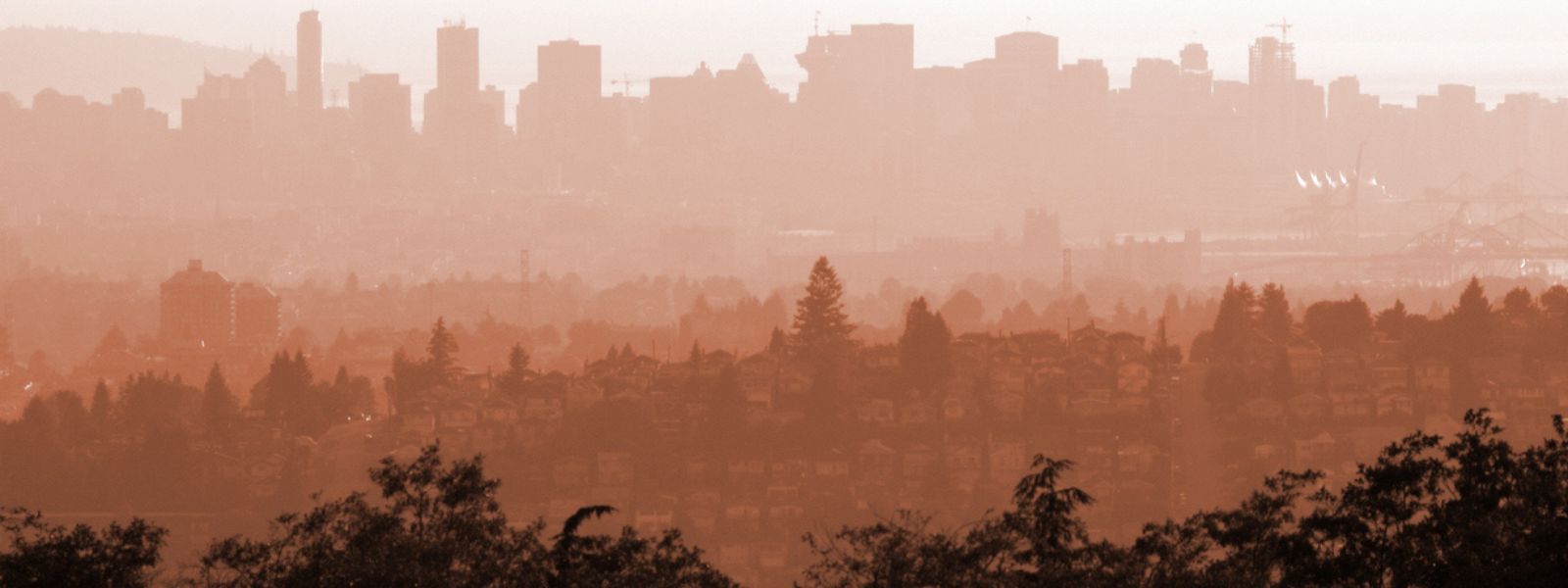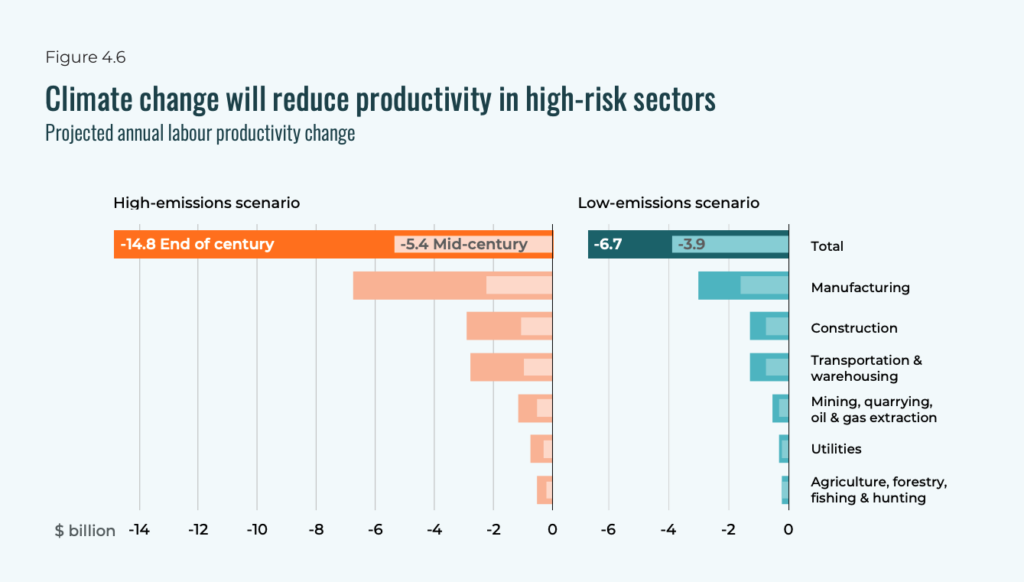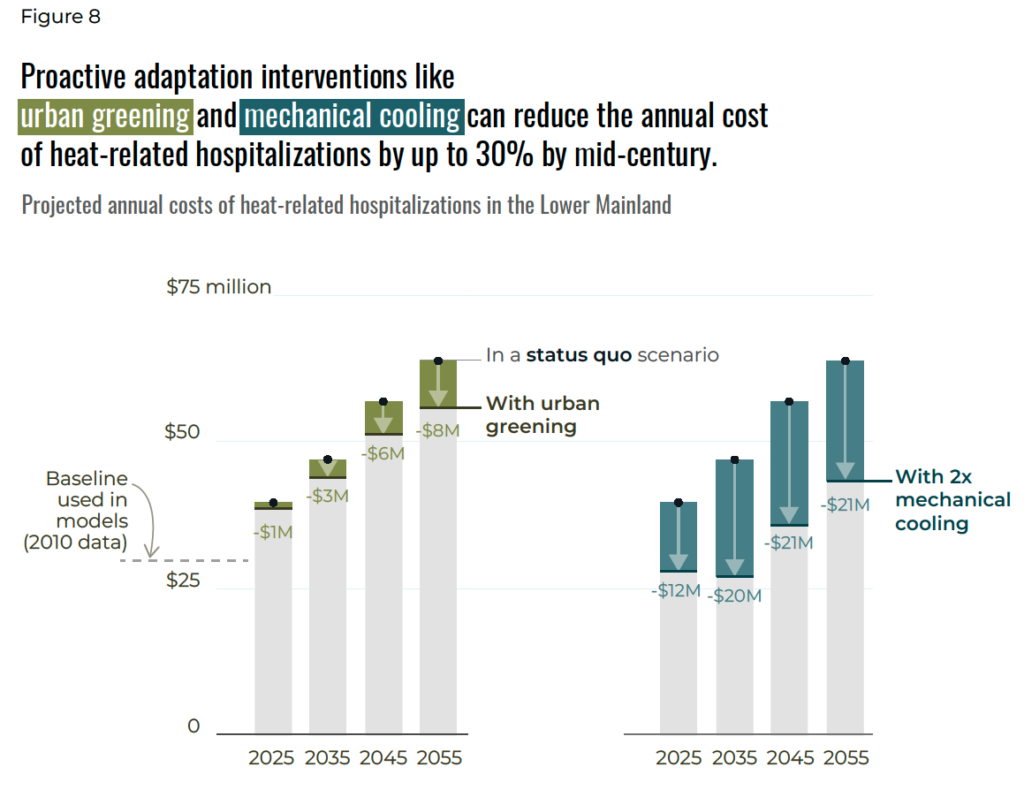
Extreme heat in Canada
Extreme heat is costly and deadly—and it’s getting more frequent and intense throughout Canada.
Many more people are confronting the life-threatening impacts of extreme heat in Canada. Even in regions that have historically had more moderate climates, such as Vancouver, Whitehorse, and Halifax, people are facing more frequent and more extreme heat. Extreme heat and heat waves are not just a challenge for Canada. Studies put the global mortality rate associated with temperature extremes at five million deaths per year. In 2023 extreme heat hit large parts of North America, Europe and China breaking temperature records around the globe. It was the hottest year in recorded human history.
What is extreme heat?
The definition of extreme heat varies based on geographic location and weather conditions such as temperature, humidity, cloud cover, and duration of event but it is when temperatures are much hotter than average for a particular time and place. A heat wave is a period of temperatures higher than what is normally expected (based on historic climate averages). They may span several days to several weeks.
The cascading impacts of extreme heat
Extreme heat takes a toll on our health, healthcare systems, and quality of life. It also fuels other climate impacts including wildfires. For example, the scientific experts at World Weather Attribution calculated that climate change more than doubled the likelihood of extreme fire weather conditions in Eastern Canada: “Climate change made the cumulative severity of Québec’s 2023 fire season to the end of July around 50 per cent more intense, and seasons of this severity at least seven times more likely to occur.”
And the costs from the impacts of extreme temperatures in Canada are rising.
In 2021, our report The Health Costs of Climate Change projected that the costs of heat-related deaths and reduced quality of life from extreme heat in Canada would range from $3 billion to $3.9 billion per year by mid-century.
Our research also found rising temperatures will drive down productivity and hurt the economy. Sectors where work takes place outdoors or in indoor spaces without cooling from air conditioners, heat pumps, or other devices, will be disproportionately impacted. Extreme heat can also have adverse impacts on food, transportation, and electricity systems.

The B.C. heat wave in June 2021 showed what is at stake as governments and people work to ready themselves for a dangerously hot future. That June, temperatures climbed for six days, breaking records. More than 600 people died during the heat wave and it was one of the costliest disasters in B.C. history. Our 2023 report, The Case for Adapting to Extreme Heat: Costs of the 2021 B.C. Heat Wave, offers an independent assessment of the costs and impacts of extreme heat. It also identifies actions governments can take to manage and prevent heat waves in the future.
How TO PROTECT PEOPLE FROM HEAT WAVES?
Even if global emissions are sharply reduced (called the “low-emissions scenario” in the figure below), Canadians will cope with more frequent and intense extreme heat because of the locked-in warming from past emissions. If global emissions are not adequately reduced, extreme heat in Canada will become even more dangerous.
There are many ways to prepare and protect people from extreme heat. For example:
- Make buildings safer by installing indoor cooling devices (like heat pumps or air conditioning)
- Plant green roofs and trees for shade in urban areas
- Give employers and the public up-to-date information on how to keep safe during extreme heat waves
- Send heat warnings out early enough to let people and responders prepare
- Design infrastructure such as roads, railways and electricity systems to withstand extreme heat and rainfall (this can reduce damage costs by 80 per cent by the end of the century, or up to $3.1 billion each year)

Our research explores the various impacts of extreme heat and how governments can reduce costs and protect people, communities, and the economy from a future that is heating up.
Reports
The Case for Adapting to Extreme Heat
Costs of the 2021 B.C. Heat Wave.
The Health Costs of Climate Change
How Canada can adapt, prepare, and save lives.
Under Water
The costs of climate change for Canada’s infrastructure.
Technical Report
Climate Impact Assessments in British Columbia.
Toward a Safer and More Resilient Canada
Our independent assessment evaluates the National Adaptation Strategy based on four key elements.
Blogs
Heed the heat warning
How regions across Canada can prepare for a future of extreme heat.
Counting the costs of climate change
How to quantify climate damages to better inform adaptation policy.
Are Extreme Weather Events the Result of Climate Change?
Attribution science is showing us that climate change is not a distant phenomenon—it is already here, now.
Case studies
Hope flows from action
Policy approaches can help build—and rebuild—communities so they are resilient to the weather of today and tomorrow.
Community is the solution
The 2021 extreme heat emergency experience in urban, rural, and remote British Columbia First Nations.
Can Green Roofs Help Cities Respond to Climate Change?
Green roofs help to cool the air, absorb excess water, and reduce energy use while supporting biodiversity and making cities more liveable.
Growing Forests in a City
Forests deliver many benefits to cities, including offering refuge in heatwaves, sequestering greenhouse gas emissions, limiting flooding, and providing mental and physical health benefits.
